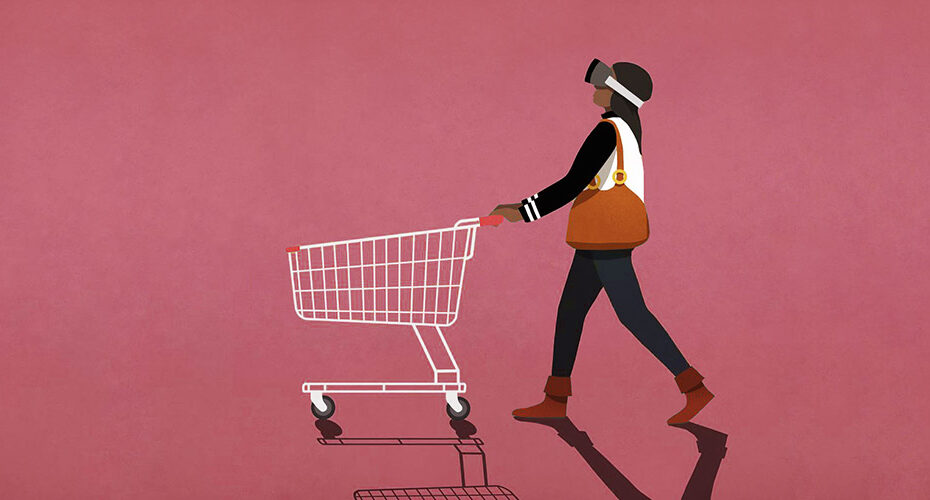The past year will be remembered as one of the most complex for the world of global trade.
Those who had a brick and mortar store found themselves forced to lower their shutters, while those who had a digital-only window suddenly suffered the shock wave of growing competition coming from both the aggressiveness of the big brands and the invasion of new competitors in the field.
Observing this commercial revolution, the consumer has been seduced by the courting of retail signs in search of sales and new methods to attract customers. For this group, a thumb on the scales on the traditional shopping experience have been put to study increasingly captivating solutions aimed at winning over the competition.
And now that we see the possibility of a return to normal, what will happen? It is not possible to make a U-turn and consumer expectations are very high for the future: now used to being at the centre of the commercial strategies of retail brands, and no longer chasing the attention of brands, they will not easily leave their dominant position.
Whether you are the owner of a brick and mortar store or an e-commerce platform, pay attention: we are going to anticipate what the wishes of customers will be in terms of shopping experience, and we will explain how to satisfy them.
I have a brick and mortar store: am I destined to disappear?
In 2020, e-commerce boomed, with a + 30% increase in the sale of products via the web in Italy alone.
It is impossible to ignore the phenomenon of online shopping: it is better, instead, to monitor consumer behaviour on physical and digital channels and study competitive solutions to emerging needs.
Let’s start by saying that a brick and mortar store has great advantages over a digital competitor: especially in not so digital-savvy markets like Italy, customers are still very fond of contact with the product and the possibility of employing all five senses to make the shopping experience enjoyable.
Buying a car or choosing a pair of shoes cannot be separated from a visit to the store, both for a practical test and for emotional satisfaction: after all, it is nice to touch, evaluate and choose in real-time.
At the same time, with a smartphone always in hand, customers can access thousands of contents in an instant and get informed, in just a few seconds, about a product or service’s characteristics. It is therefore easy to be diverted to the centre of the customer journey and change your mind about the point of sale where you buy items.
How to behave to engage a customer throughout the purchase process?
I have an online shop: am I safe from the crisis?
Let’s be absolutely clear: categorically not. Being present on the web with a digital store is not in itself sufficient to survive.
Certainly presiding over digital channels is essential to resist in the retail sector, but you will have noticed how the competition has become very fierce in just a few months.
And as for consumers? Don’t think you’ve totally convinced them. Most customers initially succumbed to online shopping out of necessity – “I had to shop during the lockdown” – or did it to benefit from lower prices. In short, certainly not a choice guided by real added value.
In a scenario of partial dissatisfaction, there is the chance to lose control and contact with the customer.
Which aspects should I pay attention to? Users complain about an online shopping experience that is still too sparse and impersonal, cold and uninvolving. Used to being pampered by sales staff and inundated with advice, details and niceties, finding yourself suddenly reading an item of clothing’s product sheet and scrolling through photos can prove to be a tad demotivating.
How to offer your consumers more?
Avoid barricades: choose multichannel
To grow at the pace of the evolution of customers and the retail sector, the only way is by multi-channels: online operators and offline stores must converge towards an intermediate world where the two dimensions merge.
Brick and mortar stores, committed to the challenge of being more present in the phase of collecting information from their customers, will have to be found right there, where consumers are looking: on the smartphone.
Enrich your digital presence with as much contact information as possible and work to create a direct line with customers. Use digital channels to connect with consumers and direct them to you whenever they have a question. How will you answer them? By directly showing your face. Thanks to social networks and innovative video commerce services, such as ShopCall. This allows shopkeepers to communicate with customers even remotely, through a simple video call.
Communicate, looking into each other’s eyes, rotating the phone screen to take a close look at a specific product and explain its features. This is the real added value that customers are looking for and can take offline stores a big step towards tomorrow.
ShopCall is also the answer to the problems of online merchants, forced to give a more human face to e-commerce: according to global research conducted by the consulting firm Havas CX, many users declare themselves exhausted wasting time online looking for information they cannot find and more than 60% of them want to connect with a human while shopping, even when they are turning to an exquisite online store.
How can you do this?
Making the remote shopping experience more human through digital support by real people.
For example, through ShopCall an e-commerce site can put customers in contact with a team of expert sellers to offer users not only information but special one-to-one consultancy, personal shopper services and dedicated and targetted offers according to their preferences.
Far more than an antiseptic chatbot, with a definite advantage in terms of cost and value.


